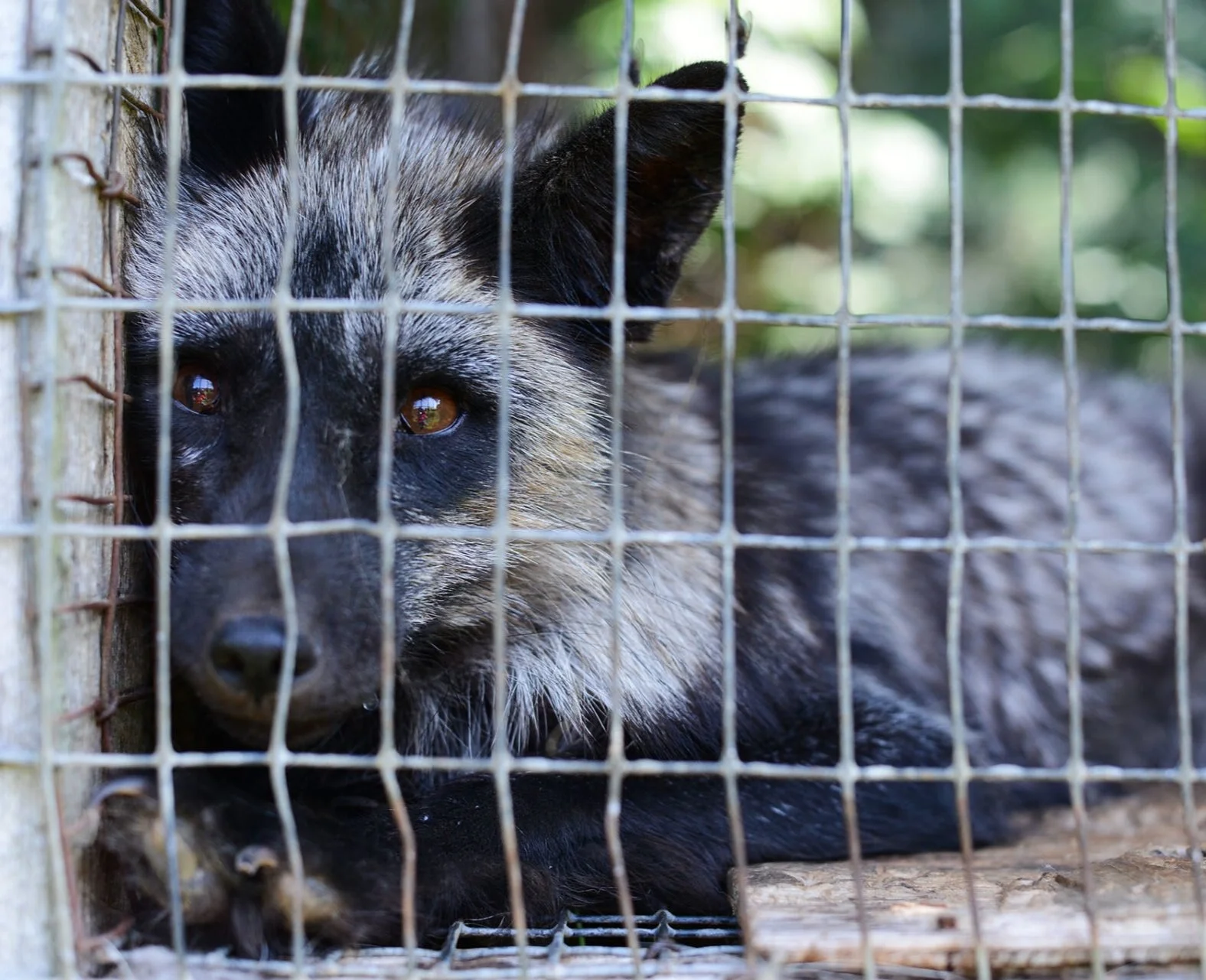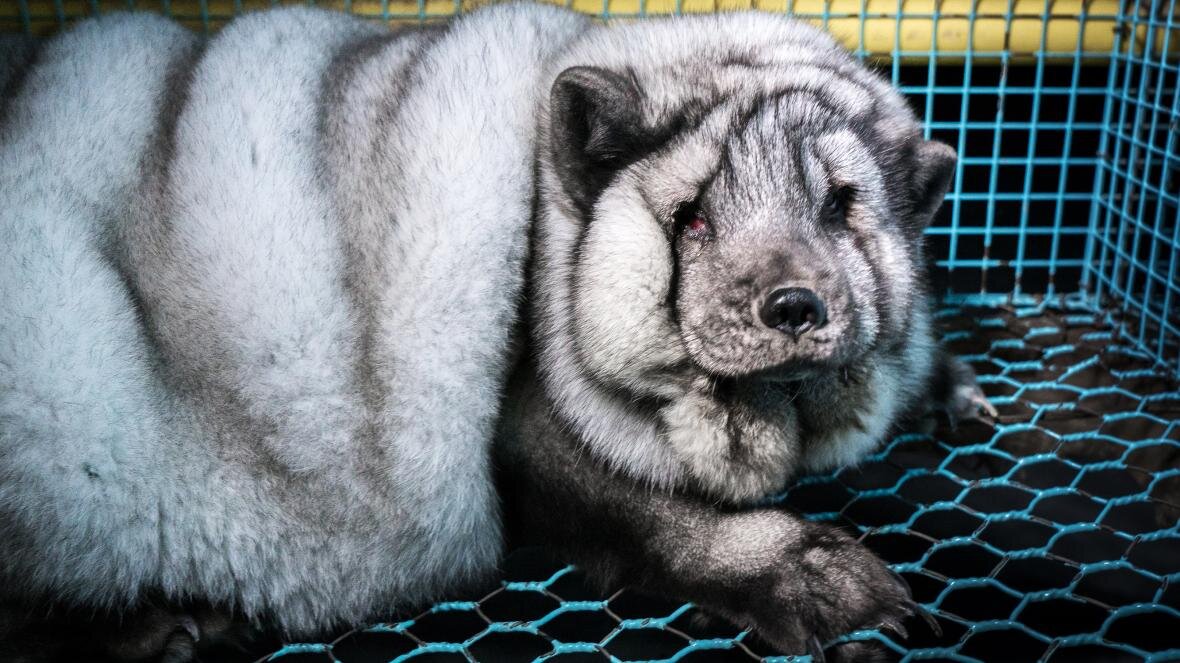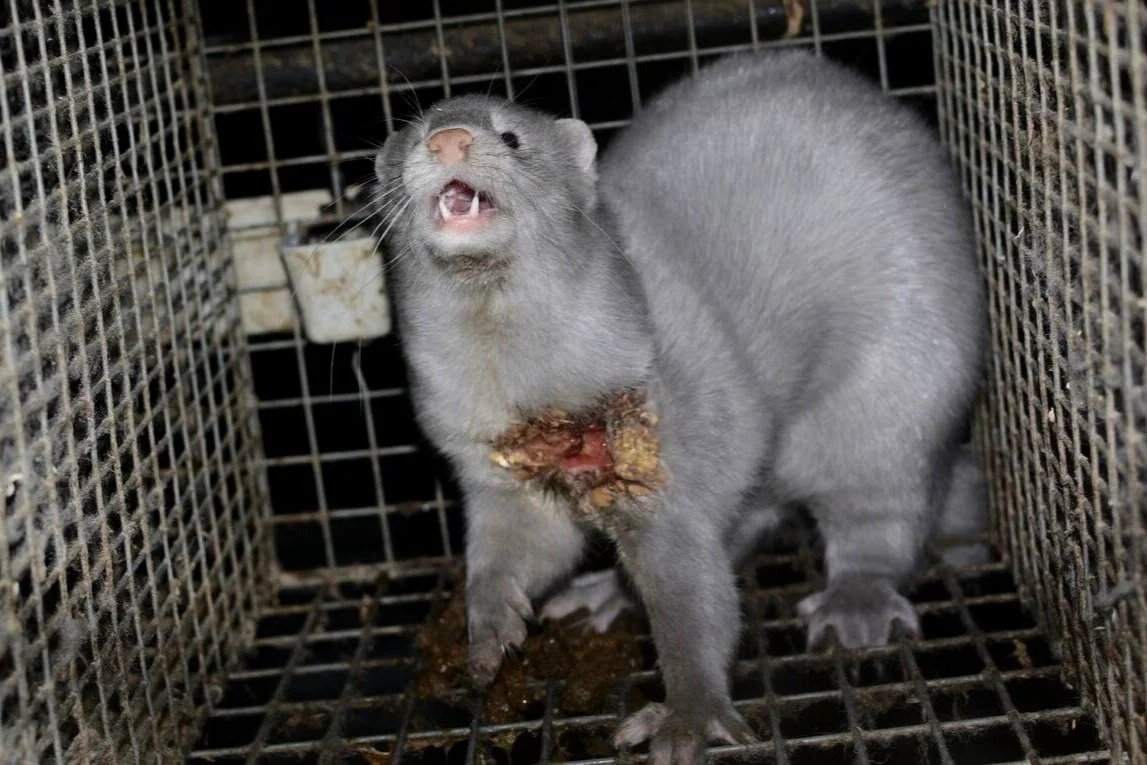Issues in the fur supply chain
Mink, foxes, rabbits and raccoon dogs are factory farmed for fur, while coyotes, lynx and raccoons are painfully trapped and left to slowly die or be shot.
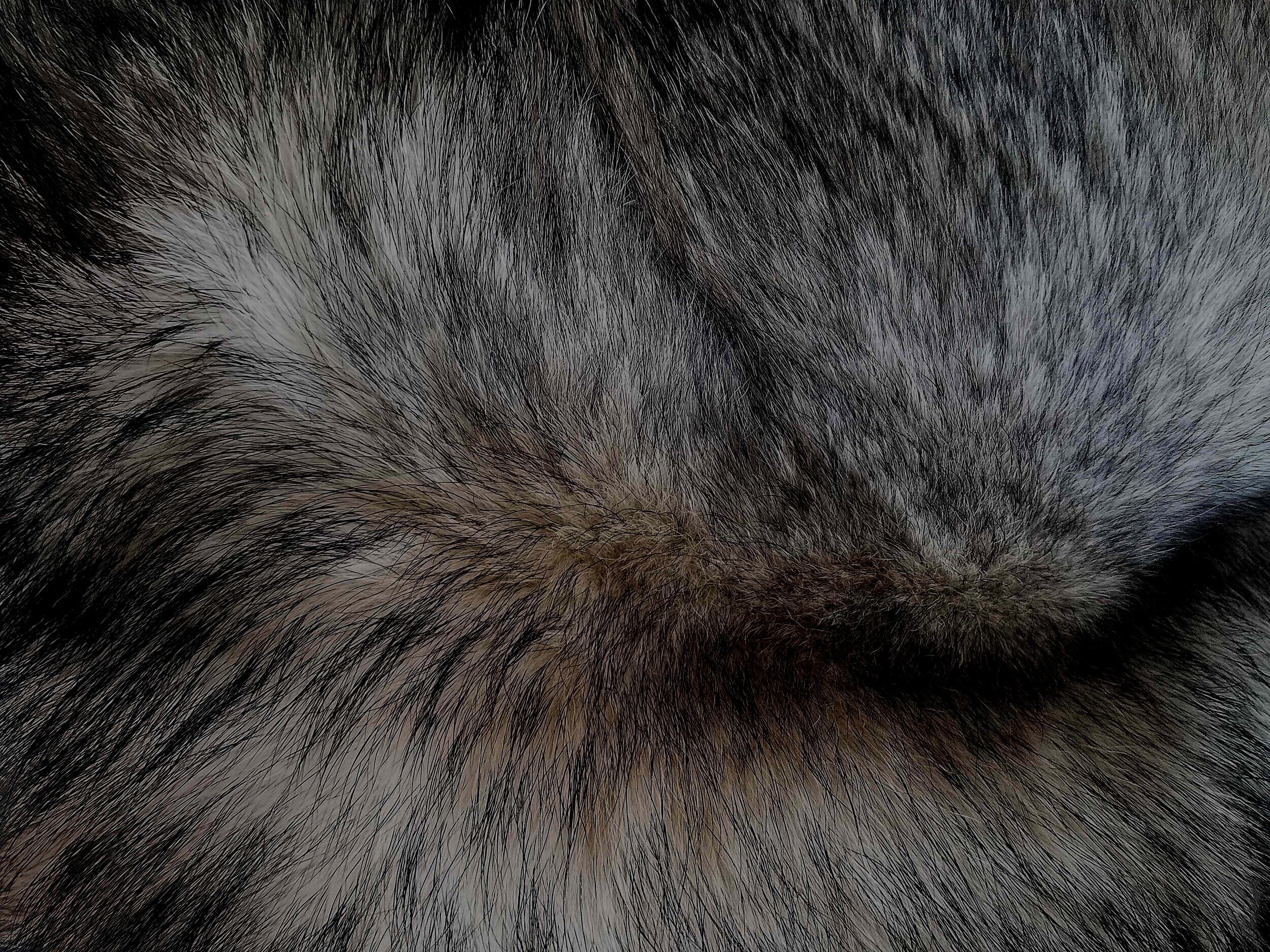
Fur will be the first animal ‘material’ to disappear from fashion. Yet, while we may be seeing less floor-length fur coats, fur products continue to be sold.
A ‘rich-looking’ fox fur coat, though still certainly produced and considered a luxury, is shunned by many.
Certainly, most people don’t tend to drape foxes around their necks anymore. But a parka with a far less identifiable ‘animal’ trim made of a a coyote’s fur is commonplace. A fluffy white fur bobble on a key ring or a beanie can be bought cheaply.
While the furs may be presented differently, often dyed into unnatural colours that help us forget who they once were, the ‘who’ behind these products is very much the same.
Not so long ago, dog fur coats were sold in America, considered common and acceptable. One day, all animal fur in fashion will be a thing of the past.
Opening image: Jo-Anne McArthur / We Animals
Inconsistent treatment of beloved animals
We keep companion rabbits in carefully tended hutches and in our homes, but we also factory-farm and slaughter them for meat and fur.
We cuddle up to our companion dogs and fawn over their every move, but we factory-farm, trap and shoot their familial relatives: raccoon dogs, foxes and coyotes.
The only reason for this inconsistent treatment of animals is our perception, informed by cultural norms. Once we collectively consider animals for who they really are and remind ourselves that they are someone, not something to turn into a coat, a beanie bobble or a keychain, the world will change forever.
As much as 95% of all fur comes from animals who spend their short, miserable lives in factory farms.
The most commonly factory-farmed animals killed exclusively for their fur and skin are foxes and mink. Rabbits, selectively bred for both their flesh and fur, are also confined by the tens of millions in factory farms.
Image: Jo-Anne McArthur / #MakeFurHistory
Breeding
Though often forgotten, animals trapped in factory farms have mothers they are taken away from. These breeding mothers are left alive and repeatedly impregnated. For rabbits, mothers are re-impregnated only seven days after they give birth. Their children are slaughtered at 20 weeks old.
Some factory farms selectively breed animals to have more fur-coated skin because this means more money. As a result, these animals have been found to have bent feet and immense difficulty walking.
Image: Justice for Animals
Foxes and mink are territorial, wild animals
In the wild, mink love to swim. They can swim up to 30 metres underwater and often live near water.
Foxes, and more specifically female ‘vixens’, are wonderful parents. The devotion of a fox mother was admired globally when she delivered food to her trapped cub every day for two weeks before he was rescued.
Both species are territorial, like their own space, and enjoy roaming far and wide.
Unnatural fur factory farm conditions mentally ‘break’ animals
The joys and freedoms of nature are denied to wild animals confined to factory farms. There is no swimming, no far roaming, no dirt under paws, no personal space.
Both foxes and mink self-mutilate, and even resort to cannibalism due to their severe stress. In a form of psychosis, animals in factory farms pace their tiny cages, and spend hours repeating behaviours like head nodding, both signs of psychological distress.
Image: Oikeutta Eläimille Investigation
Confinement
Foxes are offered only ~1 square metre of space in factory farms, yet roam 10 square kilometres in the wild. Despite only being obliged to provide few housing or ‘care’ requirements for animals, factory farmers regularly fail to meet them.
In Sweden, for example, over 50% of audited fur farms were in violation of their requirements. Numerous similar violations have been uncovered across Europe.
Gas killing
The slaughter methods on factory farms prioritise the protection of the monetary value of the furs and skins of animals who are being killed. This means that cutting throats of animals is less common.
One method of slaughter is with the use of gas boxes. With this method, animals like mink can take 15 long minutes to die. It is a stressful, slow and painful death for these animals.
Electrical and other killing
Another particularly confronting slaughter method is electrocution. Anal electrocution is often used as this ensures the fur of an animal remains untouched.
On some fur factory farms, animals are simply beaten to death. A 2020 investigation revealed animals being bludgeoned and skinned alive.
Images: Fur Free Alliance
Some companies, like Canada Goose before they finally banned fur, and many other parka brands, proudly claim their fur is ‘farm-free’ as though that means it is ethical. This couldn’t be less true.
Coyotes are lured and caught in painful steel traps. Thrashing in desperate attempts to escape from pain, they and other trapped animals like racoons and lynx are known to chew their own legs off. These desperate animals often break their teeth during this hideous process, but would sooner do so than be caught vulnerable, ready to be killed.
It’s important to note too, that traps cannot discriminate, and non-target and endangered species are also caught and trapped this way.
Image: Born Free USA
Factory farming and the planet
Factory farms are terrible not only for the animals inside, but also for the surrounding environment. Factory farms are serious contributors to ammonia emissions. Caused by faecal build-up on fur farms, these ammonia emissions lead to eutrophication.
Eutrophication causes ‘dead zones’ in surrounding waters and those they lead to, killing ecosystems and aquatic life as a result.
Phosphorus, another ‘nutrient pollutant’, can also lead to these ‘dead zones’. Mink factory farming and the excrement of mink cause extreme phosphorus output, which regularly harms surrounding waters.
Image: Fur Free Alliance
Feeding animals to each other
Animals factory-farmed for their fur are carnivorous, so must be fed flesh. This means that other animals confined to factory farms, like chickens and fish, go into their feed.
As well as adding another layer of animal cruelty to the fur supply chain, this practice also has negative environmental implications. We know that farming and eating chicken and all other animals is more environmentally impactful than eating plant-based - this knowledge applies to interconnected fashion supply chains too.
Image: Farm Transparency Project
Fur is toxic, not biodegradable
Even studies funded by the fur industry show that almost all fur does not biodegrade.
When the fur industry has used terms like ‘natural’ and ‘eco-friendly’ in their advertisements, they have been banned by advertising authorities and decided to be ‘strongly misleading’.
Fur dressing, the equivalent of leather tanning, also makes use of chemicals [PDF 68KB] like formaldehyde and chrome.
If a fur coat were composted, the toxic chemicals in it could harm soil and its health rather than returning to it naturally.
Even virgin synthetic faux fur is more sustainable to produce than dead animal fur.
An important independent study [PDF 716KB] showed that animal fur coats release far more greenhouse gas emissions in their production than even virgin synthetic faux fur coats.
The chemicals in fur are hazardous to consumers and workers
Dressing fur
It’s unsurprising that such a heavily polluting industry harms its workers. An in-depth report on fur production and the environment found [PDF 5.9MB] that ‘the surfactants, solvents, acids, tannins, fungicides, dyes and bleaches [used in fur dressing] subject industry workers to a risk of acute and chronic conditions, ranging from skin complaints to eye irritation, cancer, and even death’.
Wearing fur
An extensive report found that the majority of tested fur product samples across ten European countries were ‘substantially contaminated with hazardous chemicals at levels breaching legal industry standards’ [PDF 5.9MB]. Similar findings of carcinogenic and allergenic toxic residue on fur garments were exposed across China. Fur factory farming truly harms everyone involved.
“I spent ten years working for the fur trade, and in that time I visited fur farms across the globe so I’ve seen the reality of fur farming… I would come home to Barney my Labrador, who I loved dearly, and realise that he wasn’t that much different in size to some of the animals I saw languishing on fur farms, and the thought of him being treated like that was just unthinkable… I no longer had the conviction that what I was doing was right – defending what is indefensible. One of my main regrets is that I didn’t leave earlier… I agree fully that the fur trade is out of time.”
– Mike Moser, after resigning as CEO of the British Fur Trade Association,
having previously worked at the International Fur Federation, where he visited many fur farms across five continents.
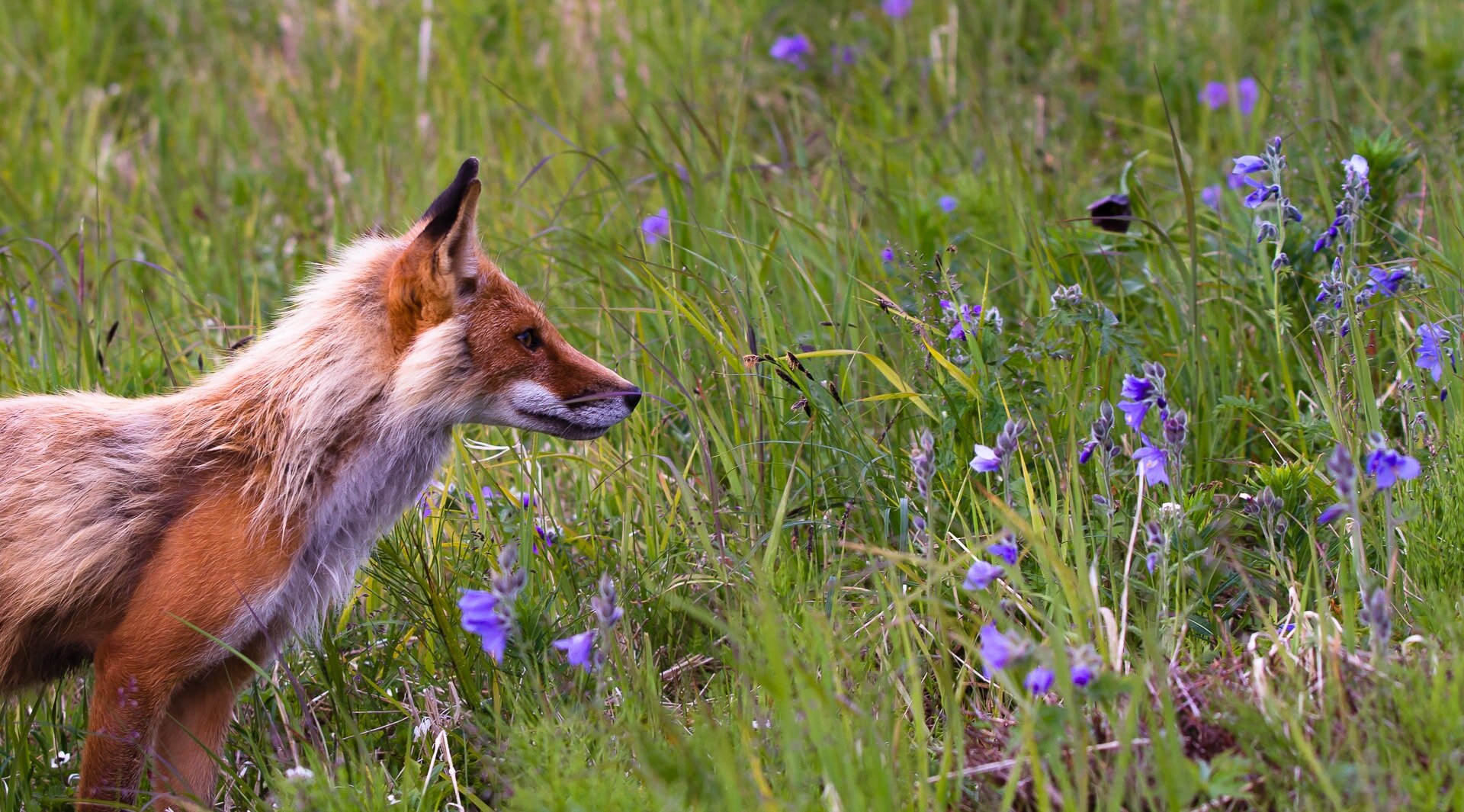
Fur belongs in the Stone Age,
not in a compassionate society
of the 21st century.
Want to keep learning?
-
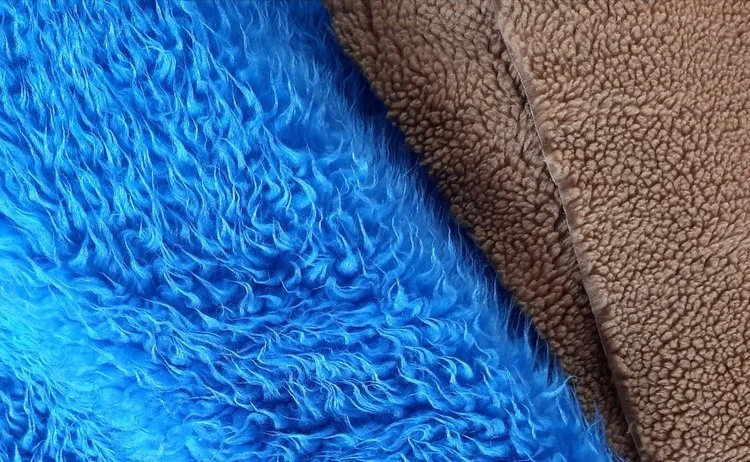
Meet GACHA: a new biodegradable faux fur
ECOPEL’s biodegradable faux fur, GACHA, benefits the planet, animals living on it, and the people who fairly make it.
-
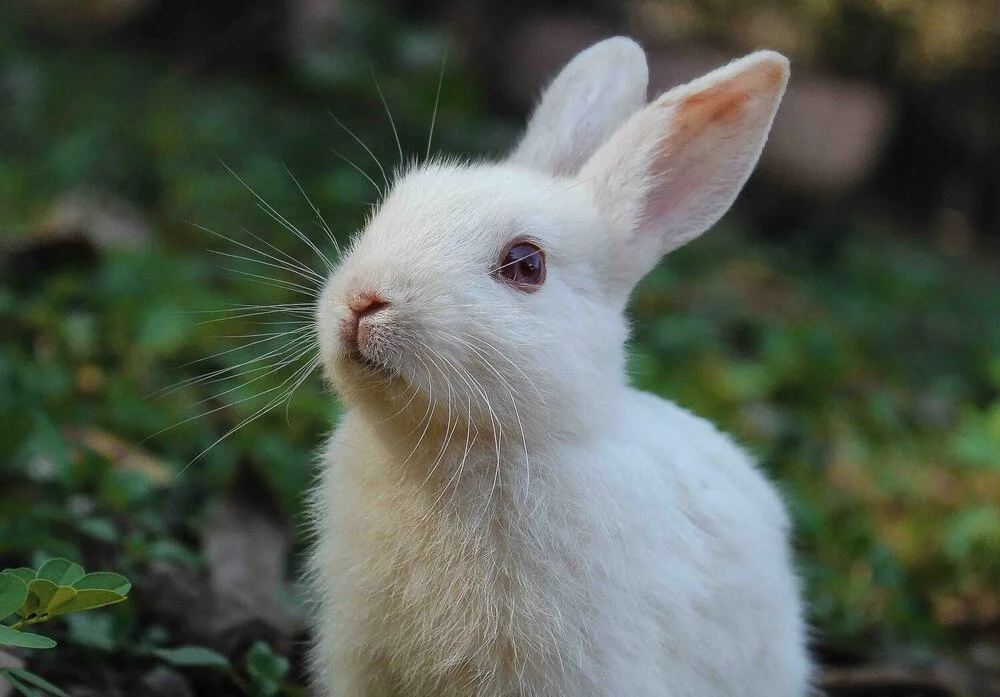
Here are 10 reasons to help ban fur from fashion
Here are 10 reasons to support the efforts to move past farming and trapping animals for the sake of fashion…
-

Cruelty is out of fashion report
An overview of the fashion industry’s laws and policies on wild animal products, from Collective Fashion Justice and World Animal Protection.

